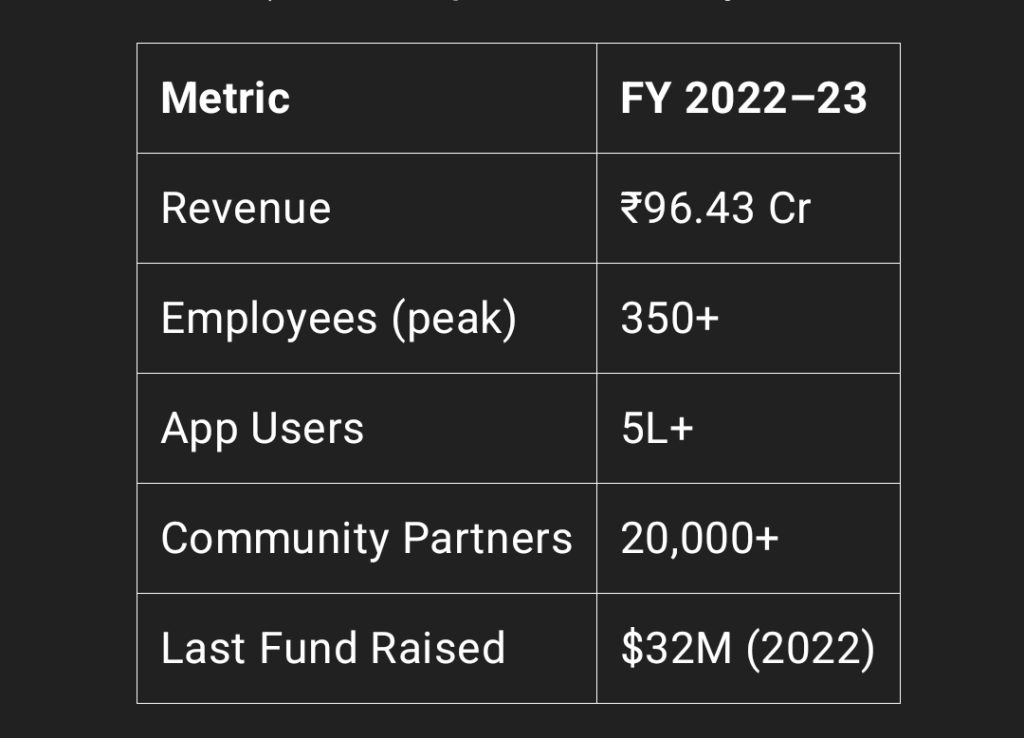Rise and Fall of Otipy: A CX Powerhouse Undone by Silence, Speed, and Strain
How an innovative Indian agritech startup reshaped the farm-to-table experience—and how financial instability unraveled its customer promise.
The Rise: A Promising CX Model (2020 – Early 2023)
Core CX Proposition: Freshness and Affordability
Otipy primary appeal to customers was the promise of fresh produce delivered directly from farms, often within 12 hours of harvesting. By cutting out middlemen and leveraging group buying, they aimed to offer competitive prices, providing a win-win for both consumers and farmers. This direct-from-farm model directly addressed a common customer pain point: the desire for fresher, higher-quality produce at reasonable prices.
Community-Led Delivery (B2B2C)
A key differentiator for Otipy CX was its reliance on a network of community resellers, often women. These resellers facilitated last-mile delivery, creating a localized and potentially more personal customer interaction. This model fostered a sense of community among users and likely contributed to initial customer loyalty and word-of-mouth growth.
Technology-Driven Demand Forecasting
Otipy employed an AI model to predict demand based on various parameters like historical orders, seasonality, prices, temperature, and holidays. This was intended to ensure accurate procurement, minimize food wastage, and ideally, ensure product availability for customers, thus improving their overall satisfaction.
Product Variety and Quality Control
Beyond fresh fruits and vegetables, Otipy expanded its offerings to include private labels like “House of Fresh” (bakery items), “One Farm” (staples), and “Farm Tale” (milk). They also implemented pre-cooling units on farms to maintain freshness and extend shelf life, indicating an emphasis on product quality—a crucial aspect of customer satisfaction.
Initial Funding & Growth
Otipy secured substantial funding, including a $1M seed round in August 2020 led by Inflection Point Ventures, a $10.2 million round, and a significant $32 million Series B round in 2022 led by WestBridge Capital, with participation from SIG and Omidyar Network India. This funding allowed for expansion and refinement of their operational and customer-facing infrastructure. Their revenue also grew, reaching ₹96.43 crore in FY2022-23 from ₹61.84 crore in the previous year.
The Fall: Deteriorating CX and Operational Challenges (Late 2023 – May 2025)
The decline of Otipy was a multi-faceted issue, but several aspects directly impacted customer experience:
Funding Crunch and Financial Strain
The inability to close a crucial $10 million funding round, reportedly due to the withdrawal of the lead investor (Hero family office), triggered a severe cash crunch. This financial instability had a cascading effect on operations and ultimately on customer service.
Operational Costs and Competition
Maintaining a robust cold chain logistics network for fresh produce is inherently expensive. Combined with intense competition from established players like BigBasket, Blinkit (formerly Grofers), and Amazon Fresh—as well as the rise of quick commerce platforms offering 10-minute deliveries—Otipy faced significant pressure on its profit margins. The traditional grocery subscription model, which Otipy followed, struggled to compete with the instant gratification offered by quick commerce.
Decline in Customer Support and Communication
As the company faced financial difficulties, customer service significantly deteriorated.
- Unresolved Issues: Customers reported that orders were not delivered despite the app showing them as delivered. Complaints filed through WhatsApp and the in-app help center were often closed without resolution, or customers were given baseless responses.
- Lack of Refunds: A major point of contention and a significant blow to customer trust was the failure to refund wallet balances. Customers reported having thousands of rupees stuck with the company, with no clear updates or timelines for refunds. This lack of accountability created widespread frustration and anger.
- Poor Communication: There was a notable lack of official communication from Otipy regarding their operational difficulties or impending shutdown. This left customers and partners in the dark, leading to a sense of betrayal and exacerbating their financial stress. Many resorted to social media platforms like LinkedIn to voice their grievances.
Impact on Delivery Partners
The customer experience was also indirectly affected by Otipy’s treatment of its delivery partners. Reports indicate that the company withheld salaries and delayed payments to vendors for several weeks, some even for months. This likely led to a decline in delivery quality and reliability, further impacting the end-customer’s experience.

Mass Layoffs
The company laid off nearly 300 employees across various departments, including software development, marketing, and fleet operations. This drastic measure, while a consequence of the cash crunch, would have undoubtedly impacted the company’s ability to maintain its operations and provide adequate customer support.
The Aftermath: Trust Shattered
Otipy’s sudden shutdown on May 17, 2025, left a trail of unpaid dues to employees, delivery partners, and unrefunded wallet balances for customers. The promise of refunds within 60–90 days, communicated to customers, offered little immediate relief given the prior lack of transparency. The entire episode serves as a stark reminder of how financial instability can rapidly erode customer trust and lead to a complete breakdown of customer experience—even for a company that once had a strong and innovative model.
CX Takeaways from the Otipy Collapse
- Financial Health Directly Impacts CX:
Customers sense distress faster than companies assume. Unstable cash flows can degrade service reliability, speed, and trust overnight. - Customer Communication Must Be Proactive, Especially in Crisis:
Silence amplifies uncertainty. Clear, consistent updates—even in times of hardship—can preserve customer goodwill and reduce reputational damage. - Wallet-Based Transactions Need Transparent Safeguards:
Brands relying on wallet top-ups must ensure instant, automated refund protocols. Locked funds destroy trust faster than undelivered products. - Tech-Driven Personalization is Not a Substitute for Human-Centric Support:
While AI helped Otipy scale, the collapse of empathetic, accountable human support during crisis moments highlighted the need for balanced CX architecture. - Empowered Communities Require Strong Back-End Support:
The community reseller model created emotional stickiness, but without backend financial support and operational clarity, even the most loyal CX evangelists disengage.

